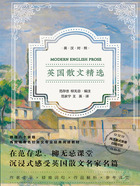
SIR RICHARD STEELE (1672—1729) AND JOSEPH ADDISON (1672—1719)


Richard Steele (1672—1729), the son of an Irish attorney, and Joseph Addison (1672—1719), the son of an English clergyman, were born in the same year and were acquainted with each other from childhood. They were schoolmates at the Charterhouse and continued their association at Oxford. Steele, being too impatient to submit to the routine of academic life, left the university for the army. Addison, the more scholarly of the two, stayed on for his degree and obtained a fellowship at Magdalen.Steele was the author of four plays, M.P., Gazetteer, and Commissioner on Forfeited Estates in Scotland. Addison was the author of The Campaign(poem), Cato (tragedy), and Drummer (comedy), and for a time served as Secretary of State. But their real fame rests on their essays. In 1709, Steele started the Tatler, a periodical published three times a week—Tuesday,Thursday, and Saturday. Addison was one of the chief contributors. In 1711, when the Tatler was discontinued, they collaborated in a new paper known as Spectator, which was published daily until December, 1712.These papers, remarkable for wit and gentle raillery, were the literary instruments by which Steele and Addison tried to reform the society of Queen Anne.
Steele and Addison differed in temperament and character.One was lively and sentimental, and the other sedate and somewhat unimpassioned. One was perhaps a more delightful companion, and the other a better teacher. And they difered characteristically in their prose styles. Steele wrote hurriedly; he lacked the patience to polish and refine his expression. His style is less ‘correct’and was therefore rated much lower than that of Addison. Dr. Johnson advised all ambitious writers to give their nights and days to Addison, for he had attained a perfect medium between the vulgar and the learned. ‘But,’ says Austin Dobson,with equal truth, ‘for words which the heart finds when the head is seeking; for phrases glowing with the white heat of a generous emotion;for sentences which throb and tingle with manly pity or courageous indignation—we must turn to the essays of Steele.’
【作者简介】
理查德·斯梯尔(1672—1729)是爱尔兰一位律师的儿子,约瑟夫·艾迪生(1672—1719)是一位英国牧师的儿子;他们出生于同一年,从小就相识。他们是卡尔特公学的同学,后来一同上了牛津大学,仍然继续来往。斯梯尔性情急躁,无法适应平静的学生生活,于是离开大学去参了军。艾迪生则比较有学者风度,继续留在牛津大学攻读学位并在莫德林学院获得了奖学金。斯梯尔写过四部戏剧,当过议员、公报记者和苏格兰没收房地产的专员。艾迪生是《战役》(诗)、《卡托》(悲剧)和《鼓手》(喜剧)的作者,曾担任过国务大臣,然而真正使他们成名的是他们的小品文。1709年,斯梯尔创办了《闲话报》,这是每周出版三期的刊物——周二、周四和周六。艾迪生是主要撰稿人之一。1711年,《闲话报》停刊,斯梯尔与艾迪生联合创办了《旁观者》,这是日报。《旁观者》持续发行到1712年12月。《旁观者》上的文章以机智与温和的讽刺而著称,是斯梯尔和艾迪生试图改革安妮女王社会的文学工具。
斯梯尔与艾迪生的气质和性格各有不同。斯梯尔充满激情,却容易多愁善感;艾迪生沉着稳重,似乎对一切都无动于衷。斯梯尔也许是一位令人愉快的同伴,而艾迪生则也许是一位更好的老师。他们的文风也有各自不同的特点。斯梯尔性情急躁,行文粗枝大叶,缺乏耐心去推敲文字以完善他的语言表达。人们认为他的文风不够“正确”,因此对他的评价也比艾迪生要低得多。约翰逊博士建议所有雄心勃勃的作家要以艾迪生为楷模,刻苦研究他的文体,因为艾迪生在通俗和高雅之间找到了两全齐美之道。“然而,”诗人奥斯汀·多布森却说,“字词是深思熟虑的心声,短语要闪烁着丰富的情感,句子则应是带有强烈同情心或英勇愤怒的呐喊;我们应当效仿斯梯尔的散文。”他的话也不无道理。